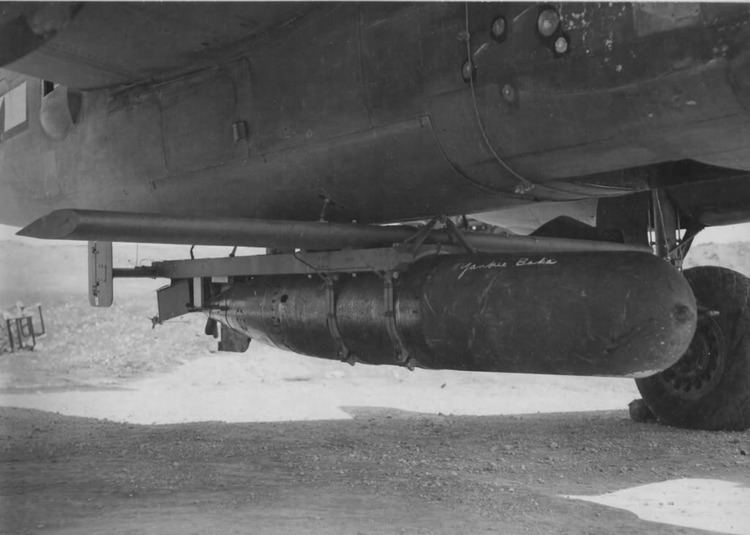Type Air-to-surface missile In service 1944-1945 Manufacturer Aeronca | Place of origin United States Designed 1942-1943 | |
 | ||
Used by | ||
The GT-1 (Glide Torpedo 1) was an early form of missile developed by the United States Army Air Forces during World War II. Intended to deliver an aerial torpedo at a safe range from the launching aircraft, the weapon proved successful enough in testing to be approved for operational use, and the GT-1 saw limited use in the closing stages of the war.
Contents
Design and development
The GT-1 was derived from the GB-1 series of glide bombs, developed by Aeronca for the United States Army Air Forces. The weapon's airframe was inexpensive and simply designed, with a basic wing and twin tails attached to a cradle for carrying the payload. The flight path of the GT-1 was determined by a preset autopilot that kept the weapon on a steady course after release.
The GT-1 was usually released from its carrier aircraft at an altitude of 10,000 feet (3,000 m); this provided a standoff range of as much as 25 miles (40 km) under ideal conditions. The GT-1's warload consisted of a Mark 13 Mod 2A aerial torpedo. The GT-1 was fitted with a paravane, trailing 20 feet (6.1 m) below the main body of the craft; upon the paravane's striking the surface of the water, explosive bolts would fire to release the torpedo, which would then execute a preset search pattern to locate and destroy its target.
Operational history
Initially tested during 1943, the GT-1 proved to be successful, and was issued to a single operational unit for service. Launched from North American B-25 Mitchell bombers, the GT-1 saw brief operational service late in the war; three missions are known to have been flown using the weapon from Okinawa in late 1945. On one mission, against Kagoshima, eleven of thirteen GT-1s launched successfully entered the water; three hits were recorded, against a fleet carrier, a light carrier, and a freighter. The Boeing B-17 Flying Fortress was also capable of carrying the GT-1.
Following the end of World War II, the aerial torpedo rapidly fell out of favor as a weapon of war against surface ships, and the 'GT' category of weapons was abolished in 1947.
